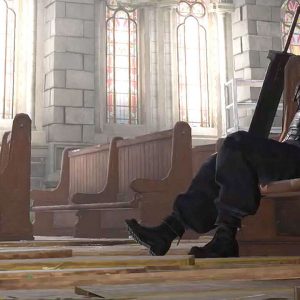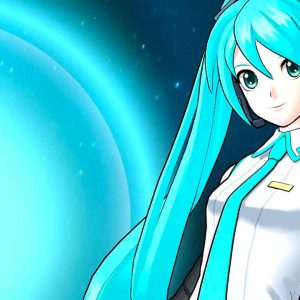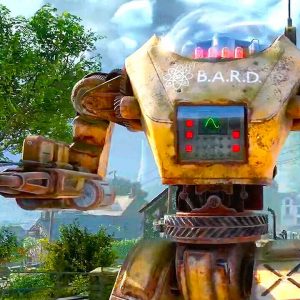The team’s hopes for improving on HCT, creating Hearthstone superstars and being more agile.
Hearthstone’s World Championship is happening in Taipei right now (you can watch the stream here), with the 16 best players in the world competing for their share of a USD $1 million prize pool. It would be a gripping tournament for that reason alone, but it’s a notable event on a number of other levels too. This tournament is the swansong for the Hearthstone Championship Tour (HCT), which has been replaced by Masters and Grandmasters, as well as for the Conquest format, which has been replaced by Specialist, where players bring a single class to tournaments. They’re seismic shifts, and the landscape for the rest of 2019 looks completely different to anything we’ve seen before.
To find out more about the changes, I caught up with Sam Braithwaite, the Senior Global Franchise Lead for Hearthstone at Blizzard. Sam has a super interesting background, and has seen the world of esports from just about every angle. He’s worked on numerous franchises at Blizzard, but before joining the studio he was a professional MOBA player and team owner, then the director of esports on Heroes of Newerth, before becoming the global director of publishing for Frostburn Studios. Sam has headed up Hearthstone esports since Che Chou left at the start of the year.
IGN: Set the scene for me. When did you come on board to work on Hearthstone? And then where things were at when you took over?
Sam Braithwaite: I started at Blizzard in 2016. I was working primarily on Heroes of the Storm and also transitioned over, worked a bit on Warcraft, worked a bit on StarCraft, but the entire time I shared an office with Che [Chou] who was the esports lead for Hearthstone. Not only that, but I was an avid player. I have probably 10,000 plus games of Hearthstone, love the game. I was always hearing and a part of the conversations of what he was doing with Hearthstone, the struggles, what they were going through, et cetera.
I fully transitioned to the team in about July or August of last year. They had just started preparing and planning for what’s going to be next. Why they looped me in is we really wanted to build Grandmasters and the Grandmasters program. Running and operating online leagues at the scale of what we’re trying to do for Grandmasters is something that I have a lot of experience in, and so I came in and really helped put together what is the vision and the execution, how were we going to change and pivot the program according to community and pro player needs.
“
HCT is successful in what it was trying to accomplish but we needed to realign what our goals were for Hearthstone esports.
When I joined in July/August I spent the first two months really just sitting down and talking to the game developers, talking to the esports team, talking to the players, talking to team owners and really looking at what is going right, what is going wrong with HCT, and what do we need to improve on to ensure the longevity of the program. Hearthstone’s a five year old game, HCT’s been around for a while. HCT is successful in what it was trying to accomplish but we needed to realign what our goals were for Hearthstone esports.
IGN: What do you think the weaknesses of HCT were? Last year was such a busy year. There were so many tour stops and too much Hearthstone to consume in a lot of ways, whereas this year’s almost the opposite. You’ve got the Masters Qualifiers, and then the tentpole tournaments, and then you’ve got Grandmasters on top of that, give me a little bit of a sense of why make the change?
Sam Braithwaite: You nailed it on the head. It was so busy. The lifestyle and what it meant to be a Hearthstone professional was not, I don’t think, what we wanted. When we originally went out and designed HCT one of the goals that we wanted to do was prove that Hearthstone is a game of skill, and we wanted to create a circuit that would highlight and elevate the best players in the world. And we were able to do that. We see people like Muzzy and Hunterace, repeat performers at all these events that are showing that they can show up time and time again, perform at the top level, and consistently win.
“
One of the first things that we wanted to do, is remove the grind.
But where I think we fell short; it was a lot of work and these guys had to grind ladder constantly. We had 32 tour stops. We had three seasonal championships, and if you look at our professional players most of them did not stream or have the opportunity to build their own brands, and so what we wanted to do was take a step back and think how do we develop a runway for these guys to be able to turn themselves into superstars? And how do we as Blizzard create the next generation of esports superstars within Hearthstone itself? That’s one of the first things that we wanted to do, is remove the grind.
How do we make it so that a professional Hearthstone player has weekly obligations, where they can show up, play at the highest level, get rewarded for it, but they don’t have to go through the same grind that everybody else does? That’s one of the things that we accomplish with Grandmasters, auto call, flying them to all the different Mastery tour events that we do. But at the same time, we wanted to create a story of how does anybody become a Hearthstone champion? How does anybody participate in the game?
If we look back on HCT, we had 19,000 unique competitors that were trying to make their way into the ecosystem. Already with the Masters Qualifiers we have over 80,000 entries, and so we wanted to remove that barrier of entry into getting into Hearthstone esports, and we wanted to create more marquee moments. If you look at all of our tour stops those were cool events, but viewership, just to speak frankly, was declining on those because there were so many. Why were they important? Why should you care about them? It’s the same people, the same competitions. It was not high stakes prize pools because what they’re earning is points and invitations to go to the seasonal championships.
“
We took a little bit of inspiration from the Magic Pro Tour stops, from CS:GO and Dota 2 Majors…
We wanted to create – what are the hype moments that people are going to tune into? And we took a little bit of inspiration from the Magic Pro Tour stops, from CS:GO and Dota 2 Majors to where you have these big $250,000 events that you have Grandmasters leading up to it, but that’s what everybody in the Hearthstone community should be tuning into, is those big Masters tour events. That’s what we were hoping to accomplish – how do we create and hype these single moments? Because everything was lost in HCT, especially when we had Global Games and Collegiate, and a bunch of other third party tournaments going on. What was important was lost in Hearthstone esports.
IGN: I definitely hear you that anybody can now try and get their foot in the door, but let’s just say I competed in one of the qualifiers and won a place to Vegas. To me as an Australian, no matter which Masters event I qualified for, it’s a really significant expense for me to then actually turn up. And I understand you’re not going to pay for hundreds of people to come to those events, but that feels like a significant barrier to me.
Sam Braithwaite: Yeah. Agreed with what you’re saying. We believe that our goal for the future is to be able to host these events in locations that make it easier for people to show up to and go to a specific event. Obviously an Americas event in Las Vegas is going to be easier for people in America to travel, just like the recently announced Seoul event will be easier for people from Asia-Pacific to travel to.
One of the things that we’re hoping for is in the future, we don’t have it ready right now but we’re starting to, is collaboration with third parties, and how do we actually work with them to be able to provide some of the housing and airlines for these tournaments? One of the cool things that we can look at is what they’re doing in Latin America with some of their Copa America tournaments, to where they’re running a qualifier where we’ve partnered up with somebody and the first place prize is an invitation to Masters Las Vegas but also the airfare and hotel provided for by the third party.
One of the things that we’ve talked about when we announced the program is that we want to work with third parties on this. We actually think that our ecosystem now is positioned better than ever to bring these guys in because we can add value as Blizzard Entertainment, so if somebody comes to us and says say, “We want to run a qualifying tournament in Australia. We have a prize pool of X,” we say, “Okay, great. We can offer you an invitation or four invitations to the next Masters tour event if you guys provide airline and a hotel for the winning players.”
That’s the type of relationship that we’d like to go through over the next couple of years as we continue to build out this program, because you’re right, it is a barrier of entry but it’s out of scope right now to be able to provide that airline and travel for everybody because it’s ridiculously expensive.
But another thing that we’re looking to do to make that a little bit easier is how we’re doing the prize pool spread and distribution, to make it so that it’s a little bit more spread out so that if you just have a winning record on day one you’ll be able to pay for the entire thing by itself, and then the following days it’s just going to be profit for you. It’s one of those things that we’ll have to gauge if that’s going to be worth it for you, if you’re confident that you’ll be able to make it through there.
Another thing is that, we’ve teased it a little bit and haven’t fully revealed it, and I still can’t talk about it yet, but there’s going to be an in-game item bundle that we’ll be selling that is going to increase the prize pool of these Masters tour events. As the prize pool increases, the spread also increases which makes it easier for people to be able to book their travel to these types of events.
Completely hear you that there’s an issue right now. I think that we have multiple ways that we’re trying to attack this issue and hopefully they all come together and work.
IGN: That’s awesome to hear. Let’s talk about these Masters tour events. How many players will it be?
Sam Braithwaite: 350, maybe more. And we’re open to it being bigger.
IGN: Wow. So how is that going to actually work for viewers? How are you going to create storylines? I guess as it whittles down the storylines emerge naturally, but what’s the strategy to make that something that people can follow all the way through?
Sam Braithwaite: Right. That’s what Grandmasters is there for, is that already going into it, of the 350 people that are going to be there, we know 48 of them because they’re coming from Grandmasters. That’s the story that we can already start to paint, is going into the event you have your American superstars, your European superstars, your APAC superstars, and then we’re also bringing the top 16 players from the Gold Series in China that are going to be there.
Not only that, but after the first Masters tour event we’ll be giving automatic invitations to the top placers that are going to be from Vegas going into Seoul and future Masters tour events. Going into future ones, we have the storylines of here are the amateur players that topped and performed really well, here’s their story going into it.
“
This is a competitor-facing event. This is a bunch of people in a giant ballroom at a hotel, tables lined everywhere, and hundreds of people sitting down and just grinding out the tournament.
Not only that, but we have all these qualifiers that are popping up, and we know the professional players that have already qualified in, and we can start to talk about them a little bit more and build that storyline, but it’s going to be crazy. It’s going to be hectic. Day one coverage is just going to be games, games, games, games, games, jumping from this series to this series to this series. We’ll do our best to bring coverage across the board to showcase everything that’s going on, but they are absolutely going to be hectic and that’s what’s going to make them so cool.
What we’re imagining these events to be like is more, it’s not your HCT World Championship audience-facing event. This is a competitor-facing event. This is a bunch of people in a giant ballroom at a hotel, tables lined everywhere, and hundreds of people sitting down and just grinding out the tournament. It’s going to be something that we’ve never really done before but broadcasting it and the production is going to be both challenging and exciting, but I think we’re ready for it.
IGN: Tell me a little bit about how that ecosystem feeds in Grandmasters. How will relegation work at the end of the year and what’s required to potentially move into Grandmasters?
Sam Braithwaite: At the end of the year the top placing cash earners at the Masters tour events have an opportunity to get promoted into Grandmasters. The bottom two in each region are going to be at risk of relegation, and then the top two in each region from the Masters tour’s prizing will be able to be promoted in. If I’m the 16th Grandmasters player in Americas and I overall am 17th in money earned at the Masters tour events, and you’re an amateur player and you’ve come up and you’re 14th overall, you’ll end up taking my spot in Grandmasters in the coming year.
IGN: Right, so “at risk of relegation” means two people definitely get relegated?
Sam Braithwaite: Yeah.
IGN: So it’s not like there’s a playoff or anything like that?
Sam Braithwaite: There is not a playoff, no. We wanted to avoid that just because at that point we think they’ve consistently proved that they were great over three large scale events. They don’t need to then play a best of three against somebody.
IGN: Tell me a little bit about how you decided on 16 per region as a number, and also two per region for relegation. It feels like – particularly somewhere like Europe – there are so many incredible players. If you just missed out on that initial 16 spot, fighting your way in and only having two spots available could be quite demoralising.
Sam Braithwaite: Yes. This is a hot spot right now with competitors and community alike. And we definitely have our ear to hear what people think. We’re not closed off on the number of relegations that we’re doing. The way that I like to lead the team is very transparent and agile, and if we feel that we’re not doing something right we’re totally opening to pivoting.
Right now the reason why we have two is because we want to actually keep a core amount of people, because we have a vision and goal in our eyes which is we want to develop and create these superstars. The moment you start churning out 25% of your players, all the work that we put in to build these guys up is lost. But at the same time, we also need to be prepared to establish and raise new players as they come in.
And the answer to your question about why 16, we talked a lot about whether or not we do 32 or whether or not we do 16, and ultimately the reason why we landed on 16 is the same thing, which is we have bandwidth and resources on our side and there’s only so many players that we can elevate and properly do.
When you add in 32, and that’s 32 per region, now we’re talking about 128 Grandmaster players which means half the field at these Masters tour events is now taken, which means there’s less opportunities for other people to come up. We’re trying to do a juggling act of taking in, building a select few and turning them into the superstars while also giving the opportunity for people to rise. If over the year we find that we’re not bringing enough people in or there’s not enough people rising in because Grandmasters are performing well at the Masters tour events, we’re open to changing that.
Another thing that we’re also open to pivoting as well, is this year we’re doing it at the end of the year, we’re doing relegations, but in 2020 we’re looking at doing it on a twice a year basis so that we’re bringing new people in more frequently. Like I said, totally open, we just want to see how it plays out and keep our ear to the ground.
IGN: Just touching on Europe one more time, was there any conversation about the East and West division? Just because there’s so many players in that region, top players.
Sam Braithwaite: There was conversations of doing 32 but there was never conversations about doing East or West.
IGN: Alright, let’s talk Specialist. Again, give me a little bit of the inside story behind deciding on that format and then just your impressions on how it’s tracking so far.
Sam Braithwaite: One of the reasons we wanted to pivot away from Conquest is that the barrier of entry to get into competitive Hearthstone was difficult. And not only that, but it was very hard for people that were more casual to be able to actually get into Hearthstone esports, so we ran a lot of focus tests and one of the things that we found is almost more than 85% of people watch Hearthstone esports to get better at the game. So how are we providing them the tools and the experience to get better at the game?
“
More than 85% of people watch Hearthstone esports to get better at the game. So how are we providing them the tools and the experience to get better at the game?
We also found that people were finding that current Hearthstone esports, they couldn’t really get into it and they weren’t really getting better because it was completely different than what their ladder experience was. They’re not banning decks, they’re not building out a lineup that is meant to counter a specific meta deck. The lineups that people bring are so different than what people are grinding on ladder normally, and that was a disconnected experience from the fan.
On top of that it was expensive and daunting to get into competitive Hearthstone esports, because not only do you have to have five competitively viable decks, you have to have five competitively viable decks for five different classes. Building up your collection and being able to do that was a barrier of entry for a lot of people, and so we wanted to create an experience that was more approachable but at the same time had depth, and had the opportunity for people to be able to showcase what makes them good deck builders. That’s something that I don’t think happened a lot with the Conquest format.
I think this championship’s different because it’s right after an expansion, but usually going into our championships events people are basically figuring out these are the five best decks and now it’s just, “How does my lineup play well against your lineup?” And you hear that when they talk in their interviews, and they’re talking, “It’s basically my lineup versus your lineup.” What we want to change the conversation to is, “What are the strategic decisions that people are making after the game in order to better their odds against their opponent?”
We want to be able to find a way to take that conversation and plug it into our broadcast, so as you’re watching Grandmasters and two players are facing off, as they go from game one to game two, why did they switch to their Specialist deck number two? What are the five key cards that they’re changing? And why did they put those cards in specifically against that matchup that they have?
That right there is information that’s going to make people better at the game. And that’s what we want to do, is be able to provide this educational experience so that people watch Hearthstone esports, they connect some dots, they go back and they have a better ladder experience, they get better at the game, they maybe play in a Masters Qualifier. That’s how we want to introduce them to Hearthstone esports.
IGN: How are you feeling about how the Masters Qualifiers have been going so far, using the format?
Sam Braithwaite: It’s a little bit too early to tell just because the recent expansion came out. I think people are still trying to figure stuff out. There’s no lie that we were plagued with some pretty intense Control Warrior matchups right after the expansion came out, but now we’re seeing a lot of Rogues come out, we’re seeing a lot of Warlocks and Zoo come out. I think that the true test of this format is going to be our Masters tour event in Las Vegas.
“
I think that the true test of this format is going to be our Masters tour event in Las Vegas.
I’ve said this before in interviews, we are 100% prepared to pivot away from the Specialist format if it’s not working out. We have an idea in our heads of what we’re trying to accomplish, what our goals are with this format, but at the end of Grandmasters season one and at the end of Masters tour Las Vegas, if we’re not hitting the goals that we have set out we’re open to pivoting and we have several formats that we want to test out that we’ve been working with the game team on. But we’re confident in this and we think it’s going to work. Like I said, we are trying to be a little bit more agile as a team and we’re ready to pivot if need be.
IGN: It’s going to be interesting because it’s going to be a direct point of comparison. We have the same set of cards at this championship as at Vegas, so we’ll be able to see from a viewer experience how the two formats stack up.
What is your hope for how the meta of a Specialist tournament actually works? Do you think there’s going to be a greater deck representation than past representation at something like Worlds? Or do you think it’s going to be the strongest deck, the counter to that deck, the counter-counter? What do you think? What’s your gut feeling?
Sam Braithwaite: It’ll probably be the latter. We have some really intense trading card game enthusiasts on our esports teams that have been doing this for 10 to 12 years, and these guys understand very deeply how these large scale 350 plus tournaments work with a format like this. And it is very much what you said, which is there’s going to be the best deck. But then there’s going to be the decks that beat that. And then there’s going to be the decks that beat that. And then there’s going to be the decks that are well-rounded to do well against everybody.
“
We have some really intense trading card game enthusiasts on our esports teams… and these guys understand very deeply how these large scale 350 plus tournaments work with a format like this.
Over the first couple of events that we’re seeing, like with Specialist, we see it very dominated by a specific deck. When we first launched Specialist we were seeing the top eight was almost always Hunter, and then after a couple of weeks we started to see a good diversity of decks that would counter that. And then we started to see deck C that was emerging. I think that’s what’s going to happen at the Masters tour event. We’ll probably see three to four dominant classes but then we’ll see the people that are coming in that are, as the name describes, Specialist.
We have to understand that we’re now reaching this audience of people that are going to be coming to these Masters tour events, that are going to be very different than your normal competitors. They’re not going to actually have a lot of deep insight into those kind of things. There’s going to be people that qualify with their Masters tour decks that don’t even have three Specialist decks, but just have their main one deck that they play from home just having a good time, and they happen to win one of these qualifying tournaments.
You’re going to see these people that literally only play Mage because they love Mage, and that’s their favourite class, and they won one of these qualifiers, and they’re there, and they’re going to try their best with that specific class. It’s going to be a little bit all over the place but I think that you can expect the top 16, the top 32 to be those dominant four classes, just like any card game event that you’ll see.
IGN: Speaking about the Warrior Specialist meta that developed after launch, how do you guys feel about potentially banning cards if, Elysiana for instance, is just, you think, going to be a problem, it’s going to ruin the viewer experience, or you’re going to blow out the length of a tournament. You’ve got a big tournament coming up and that’s where things are at, is that something that could happen? What would your solution be?
Sam Braithwaite: We wouldn’t be banning cards necessarily, that’s something that we just don’t really do on the esports side. I think there’s only banned card, that’s Whizbang, and that’s obviously for competitive integrity reasons that we have that card in there. That’s going to be something that the players are going to have to figure out. And we’ve already seen that, which is it was a very dominant deck, it was dragged out, and they found a way to beat it.
“
We wouldn’t be banning cards necessarily, that’s something that we just don’t really do on the esports side.
What makes Specialist cool is that Specialist gives people the tools to specifically try and counter decks like that. If you were just to have a single class, one deck format, I think that would be very plaguing, potentially, to a competitive tournament like that, but allowing Specialist allows people to anticipate that that’s going to happen and have a counter prepared for it.
IGN: Coming back to what you were saying about being nimble and agile and pivoting away from Specialist if needed, I assume the same would be true if you just wanted to tweak it, like maybe the sideboard concept changes a little bit. Is that something you would do?
Sam Braithwaite: Oh yeah, totally. The number of cards is something that we’re potentially looking at as well, but it’s one of those things that we’ve just got to get this out there. We’ve got to see how the first Masters tour event plays out. I think that once we get this going we’ll get a little bit more feedback and transparency, and I think we’re really looking forward to actually rolling this out in Grandmasters as well.
We’re going to have our ear to the ground, especially on Grandmasters, week over week, how these guys are preparing for these different tournaments and events. And we’re prepared to talk to them, sit down with everybody at the Masters tour events, and figure out what’s going right, what’s going wrong, and how do we pivot to make it better?
IGN: Cool, thanks Sam.
Cam Shea is Editor in Chief for IGN’s Australian content team and recently spoke to Team 5’s Dean Ayala about the current meta. He’s on Twitter.























